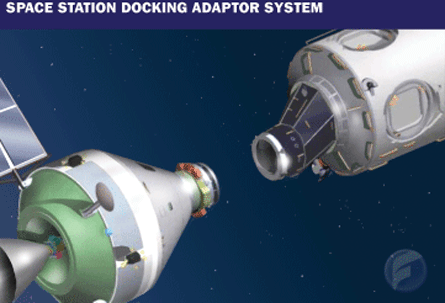The first two manned Orion crew exploration vehicle flights to the International Space Station, scheduled from September 2015, will deliver a new NASA-developed docking adaptor.
These will be fitted to the two ISS ports the Space Shuttle currently uses to dock with the station, and which from 2015 will be used by CEV.
Fitted to the ISS's Russia-designed Androgynous Peripheral Attach System, the new APAS To Low Impact Docking System Adaptor System, or ATLAS, will see Orion, which uses NASA's LIDS, dock with ATLAS' LIDS interface.
It would resolve the issue of how Orion docks with the ISS's APAS from CEV's expected initial operating capability date of September 2015, while in Moon missions from 2020 it will use LIDS to dock with NASA's Altair Lunar Lander.
"The concept of ATLAS has been around for some time," says NASA. "It has been in the works for the last couple of years."
The ATLAS comprises an "active APAS" which attaches to the ISS's ports' "passive APAS", and a LIDS interface that will be used to attach to the future Orion LIDS. The ATLAS' APAS and LIDS elements are connected together with a short tunnel structural segment, creating the adaptor.

Orion prime contractor Lockheed Martin is developing, with NASA, the CEV's crew and service modules and the US space agency is providing the docking system.
Source: FlightGlobal.com























